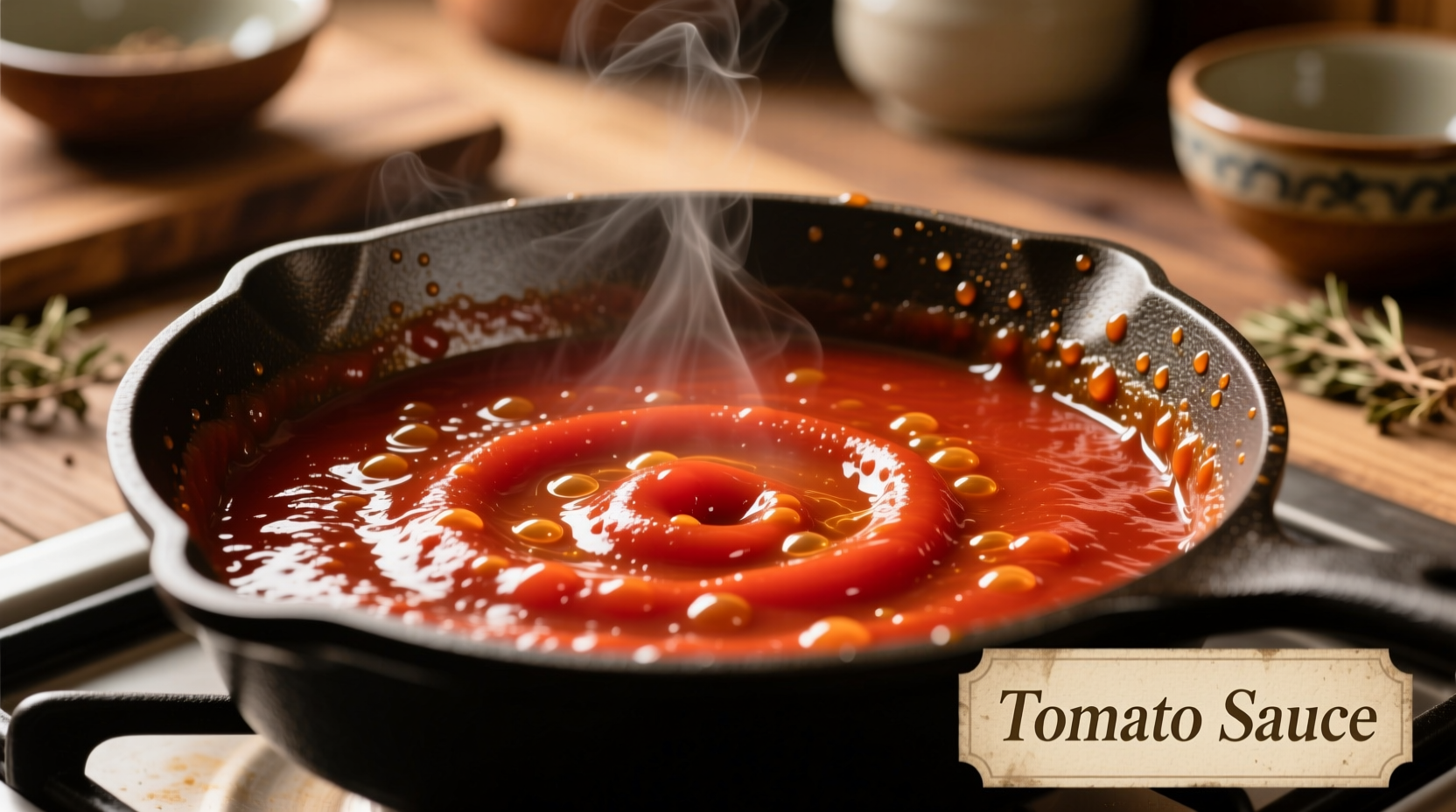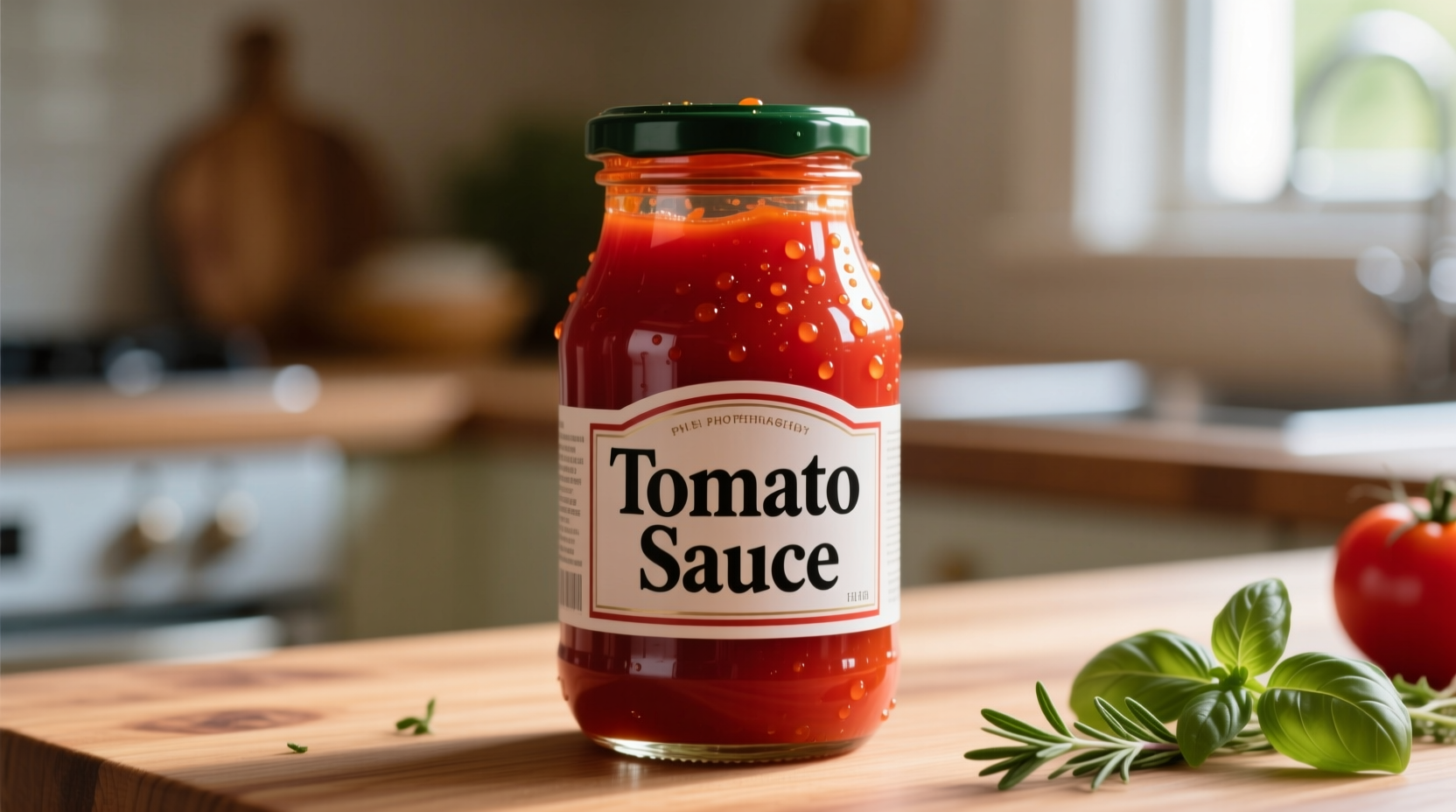Ever wonder why some tomato sauces boast that perfect, appetizing red hue while others look dull or orange? As a home cook, achieving that restaurant-quality red color can transform your dishes from ordinary to extraordinary. In this guide, you'll discover the science behind tomato sauce color, practical techniques to enhance redness, and common mistakes that rob your sauce of its vibrant appeal.
The Science Behind the Red: Lycopene Explained
Lycopene is the superstar pigment responsible for the rich red color in tomatoes and tomato products. This carotenoid antioxidant gives tomatoes their characteristic hue and offers significant health benefits. Unlike some nutrients, lycopene becomes more bioavailable when tomatoes are cooked and processed.
According to research from the USDA Agricultural Research Service, lycopene concentration varies significantly among tomato varieties. Deep red heirloom varieties like 'San Marzano' and 'Amish Paste' contain higher lycopene levels than yellow or orange tomatoes. The ripeness stage also matters - fully vine-ripened tomatoes develop maximum lycopene content compared to those picked green and ripened off-vine.

Factors That Impact Your Sauce's Redness
Several key factors determine how red your tomato sauce will appear. Understanding these elements puts you in control of your sauce's final color profile.
| Factor | Effect on Color | Scientific Explanation |
|---|---|---|
| Tomato Variety | Heirloom varieties produce deeper red | Different cultivars contain varying lycopene concentrations (USDA, 2023) |
| Ripeness Level | Fully ripe = maximum redness | Lycopene synthesis completes at full ripeness (Journal of Agricultural and Food Chemistry) |
| Cooking Temperature | Moderate heat enhances red; high heat degrades | Lycopene breaks down above 190°F (88°C) (Food Chemistry journal) |
| Acidity Level | Proper acidity preserves vibrant red | pH between 4.0-4.5 maintains lycopene stability (National Center for Home Food Preservation) |
Professional Techniques for Richer Red Sauce
Professional chefs employ specific methods to maximize the red color in tomato sauces. These techniques work with the science of lycopene rather than against it.
Start with Quality Ingredients
Choose tomatoes at their seasonal peak for maximum lycopene content. San Marzano DOP tomatoes from Italy are renowned for their deep red color and sweet flavor. When fresh tomatoes aren't in season, high-quality canned whole peeled tomatoes often provide better color consistency than pre-made sauces.
Master the Cooking Process
The way you cook your sauce dramatically affects its final color. Follow these professional tips:
- Start with gentle simmering - Bring sauce to a gentle simmer (180-190°F) rather than a rolling boil to preserve lycopene
- Add acid early - Incorporate a small amount of wine or vinegar at the beginning to stabilize the red pigments
- Avoid over-reduction - Excessive cooking concentrates other pigments that can make sauce appear darker or brownish
- Finish with raw tomato paste - Stirring in a tablespoon of high-quality tomato paste at the end boosts red color without overcooking
Common Color-Killing Mistakes
Many home cooks unknowingly sabotage their sauce's vibrant red color. Watch out for these common pitfalls:
- Overcooking at high temperatures - Boiling destroys lycopene and causes oxidation that turns sauce brown
- Adding dairy too early - Cream or cheese added during cooking can cause separation and dull the color
- Using underripe tomatoes - Green or partially ripe tomatoes contain chlorophyll that creates an orange hue
- Improper storage - Exposure to light and air during storage degrades lycopene over time
Understanding Context Boundaries: When Techniques Work Best
Not all color-enhancing techniques work equally well across different sauce applications. Understanding these context boundaries will help you apply the right methods for your specific dish:
- Marinara vs. Bolognese - Quick-cooking marinara benefits from fresh tomato quality, while meat-based sauces like Bolognese develop deeper color through the Maillard reaction from browned meat
- Canning considerations - When preserving sauce, proper acidification is critical not just for safety but for maintaining red color during storage (National Center for Home Food Preservation guidelines)
- Restaurant vs. home kitchen - Commercial kitchens often use tomato paste with higher soluble solids content that creates richer color, but home cooks can achieve similar results with proper technique
- Time constraints - When short on time, using high-quality canned tomatoes with added tomato paste yields better color than rushing the cooking process
Evolution of Tomato Sauce Color Understanding
The culinary world's understanding of what creates the perfect red tomato sauce has evolved significantly over time:
- Pre-1950s - Chefs relied on visual cues and tradition without understanding the science behind color development
- 1950-1980s - Food scientists identified lycopene as the key pigment, but home cooks rarely applied this knowledge
- 1990s - Research revealed lycopene's health benefits, increasing interest in maximizing its presence in foods
- 2000s-Present - Modern culinary science has refined techniques for preserving and enhancing lycopene content during cooking
Today's chefs combine traditional methods with scientific understanding to create sauces that are both visually stunning and nutritionally optimized.
Practical Application: Your Red Sauce Action Plan
Ready to transform your tomato sauce? Follow this simple action plan for consistently vibrant red results:
- Select deep red, fully ripe tomatoes or high-quality canned whole peeled tomatoes
- Add a splash of wine or vinegar early in the cooking process
- Maintain a gentle simmer below 190°F (88°C)
- Stir in a tablespoon of high-quality tomato paste during the last 10 minutes of cooking
- Store properly in airtight containers away from light
Within weeks of applying these techniques, you'll notice a dramatic improvement in your sauce's visual appeal and flavor complexity. The vibrant red color isn't just attractive—it signals higher lycopene content and better overall quality.
Does a deeper red color mean better tomato sauce quality?
Generally yes. A vibrant red color typically indicates higher lycopene content, proper ripeness, and careful preparation. However, color alone doesn't guarantee flavor quality—balance of acidity, sweetness, and seasoning matters equally.
Why does my tomato sauce turn orange instead of red?
Orange tones usually indicate underripe tomatoes, excessive cooking temperature that degrades lycopene, or insufficient acidity. Using tomatoes that weren't fully vine-ripened or boiling the sauce too vigorously are common culprits.
Can I make my tomato sauce redder after it's already cooked?
Yes, but with limitations. Stirring in high-quality tomato paste (1-2 tablespoons per quart) can enhance redness. Adding a small amount of acid like lemon juice may also help stabilize the color. However, severely degraded lycopene cannot be fully restored.
Does the red color affect nutritional value?
Yes. The red color comes from lycopene, a powerful antioxidant with documented health benefits. Deeper red sauces typically contain higher lycopene concentrations, especially when tomatoes have been properly cooked to increase lycopene bioavailability.
Should I add baking soda to make my sauce redder?
No. While baking soda can temporarily intensify red color by changing pH, it degrades vitamin C, creates off-flavors, and ultimately damages the sauce's nutritional profile and taste. Proper tomato selection and cooking techniques are far superior approaches.











 浙公网安备
33010002000092号
浙公网安备
33010002000092号 浙B2-20120091-4
浙B2-20120091-4